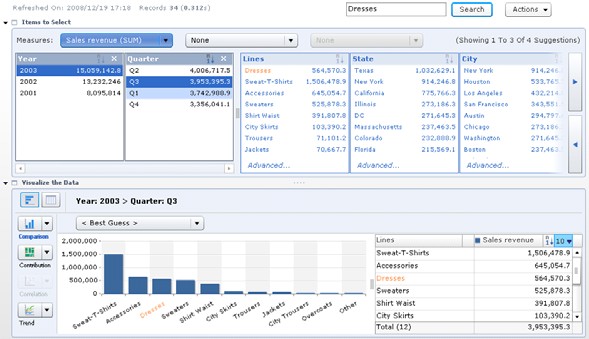Wolfgang Hilpert and Thomas Volmering gave us an update on NetWeaver BPM, since I was last updated at SAPPHIRE when they were releasing the product to full general availability. They’re readying the next wave of BPM – NetWeaver 7.2 – with beta customers now, for ramp-up near the beginning of the year and GA in spring of 2010.
There are a number of enhancements in this version, based on increasing productivity and incorporating feedback from customers:
- Creating user interfaces: instead of just Web DynPro for manual creation of UI using code, they can auto-generate a UI for a human-facing task step.
- New functions in notifications.
- Handling intermediate events for asynchronous interfaces with other systems and services.
- More complete coverage of BPMN in terms of looping, boundary events, exception handling and other constructs;
- Allowing a process participant to invite other people on their team to participate in a task, even if not defined in the process model (ad hoc collaboration at a step).
- The addition of a reporting activity to the process model in order to help merge the process instance data and the process flow data to make available for in-process analytics using a tool such as BusinessObjects – the reporting activity takes a snapshot of the process instance data to the reporting database at that point in the process without having to call APIs.
- Deeper integration with other SAP business services, making it easier to discover and consume those services directly within the NetWeaver Process Composer even if the customer hasn’t upgraded to a version of SAP ERP that has SOA capabilities
- Better integration of the rules management (the former Yasu product) to match the NetWeaver UI paradigms, expose more of the functionality in the Composer and allow better use of rules flow for defining rules as well as rules testing.
- Business analyst perspective in process modeler so that the BA can sketch out a model, then allow a developer to do more of the technical underpinnings; this uses a shared model so that the BA can return to make modifications to the process model at a later time.
I’d like to see more about the ad hoc runtime collaboration at a task (being able to invite team members to participate in a task) as well as the BA perspective in the process modeler and the auto-generation of user interfaces; I’m sure that there’s a 7.2 demo in my future sometime soon.
They also talked briefly about plans for post-7.2:
- Gravity and similar concepts for collaborative process modeling.
- Common process model to allow for modeling of the touchpoints of ERP processes in BPM, in order to leverage their natural advantage of direct access to SAP business applications.
- Push further into the business through more comprehensive business-focused modeling tools.
- Goal-driven processes where the entire structure of the process model is not defined at design time, only the goals.
In the future, there will continue to be a focus on productivity with the BPM tools, greater evolution of the common process model, and better use of BI and analytics as the BusinessObjects assets are leveraged in the context of BPM.

